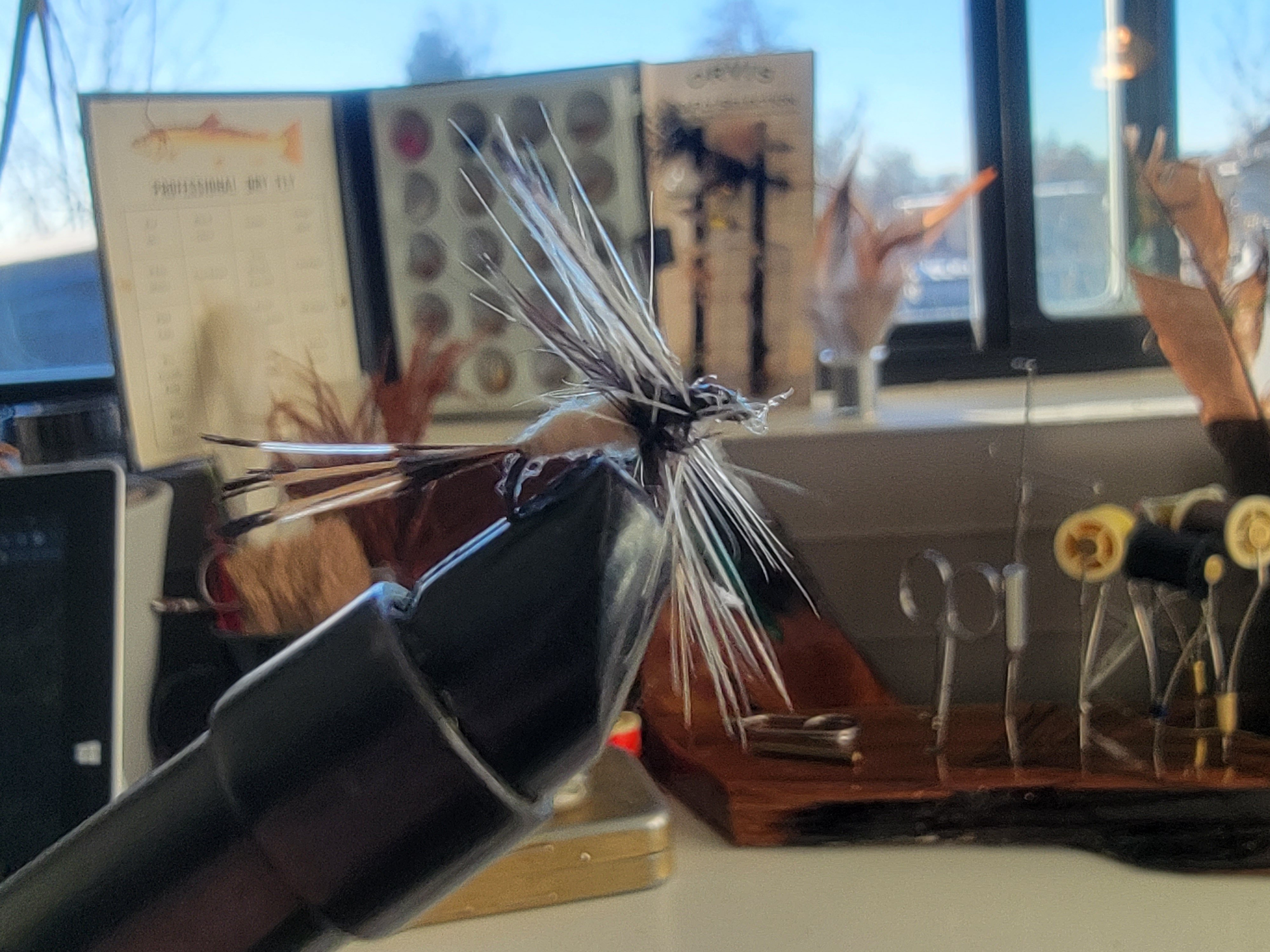For those passionate about fly-tying, it is essential to know about hackle materials. Hackle materials create the feathered collars that make flies look realistic. The feathers are wound around the hook to give the fly its shape and movement.
Different types of hackle feathers are used for different fly-tying purposes. The most commonly used hackle materials are rooster, hen, and soft hackle feathers. Each hackle feather type has unique properties and characteristics that make it suitable for specific fly-tying techniques.
Understanding the different types of hackle feathers

Understanding the different types of hackle feathers is crucial to fly-tying. Hackle feathers are used to create the collar or legs of a fly, providing movement and lifelike action in the water. Various types of hackle feathers are available, each with its own unique characteristics.
One common type of hackle feather is the rooster saddle hackle. These long and slender feathers come in various sizes and colors. They are known for their flexibility and durability, making them suitable for various fly patterns. Rooster saddle hackle feathers are often used for dry flies.
Another popular type of hackle feather is the hen hackle. Hen hackle feathers are softer and webbier compared to rooster saddle hackle feathers. They are typically used for wet flies and nymphs, providing a more natural and lifelike appearance in the water. Hen hackle feathers come in various colors, allowing fly-tyers to create realistic imitations of various aquatic insects.
Additionally, there are specialty hackle feathers available, such as schlappen feathers and spey hackle feathers. Schlappen feathers are long and fluffy, commonly used for streamer patterns. Spey hackle feathers are soft and flowing, perfect for creating movement in larger flies like salmon and steelhead patterns.
Understanding the different types of hackle feathers will help you choose the right feather for your specific fly pattern and the desired effect in the water.
Selecting the right hackle feather for your fly pattern
Selecting the right hackle feather for your fly pattern is essential to achieve the desired look and action. When choosing a hackle feather, consider the following factors:
- Size: The size of the hackle feather should be appropriate for the size of the fly you are tying. A feather that is too large or too small can affect the balance and movement of the fly.
- Barbs: Look for hackle feathers with evenly spaced and straight barbs. This will ensure a neat and uniform appearance when the feather is wrapped around the fly.
- Color: Choose a hackle feather that matches the color of the insect or baitfish you are imitating. Natural colors such as brown, black, and grizzly are versatile choices that can imitate a wide range of aquatic species.
- Webbing: Consider the webbing of the hackle feather. Feathers with more webbing will create a softer, lifelike appearance in the water.
Tips on properly preparing and using hackle feathers
Proper preparation and use of hackle feathers are crucial for achieving optimal results in fly-tying. Here are some tips to help you:
- Preparing the feather: It is important to prepare a hackle feather properly before using it. Start by stripping off any excess fluff or fibers from the base of the feather. This will ensure a clean and secure attachment to the fly. You can use a pair of hackle pliers to hold the feather while stripping off the excess fibers.
- Wrapping the feather: When wrapping the hackle feather around the fly, space the wraps evenly and with slight tension. This will create a uniform and attractive collar or legs. Use your fingers or a hackle plier to control the tension and prevent the feather from slipping or twisting during the wrapping process.
- Trimming the excess: After wrapping the hackle feather, trim off the excess stem using a pair of sharp scissors. Be careful not to cut into the barbs, as this can affect the fly's overall appearance and action.
Exploring alternative hackle materials for unique fly designs
While traditional hackle feathers are widely used in fly-tying, alternative materials can add uniqueness and creativity to your fly designs. Consider exploring the following options:
- Synthetic fibers: Synthetic fibers, such as polypropylene and EP fibers, can be used as hackle substitutes. These materials offer a wide range of colors and textures, allowing you to create innovative and eye-catching flies. They also provide added durability and buoyancy.
- Soft materials: Instead of using traditional hackle feathers, you can experiment with softer materials like marabou or CDC (cul-de-canard) feathers. These materials create a more subtle and lifelike movement in the water, perfect for imitating delicate insects or small baitfish.
- Natural materials: Apart from hackle feathers, other natural materials can be used as hackle substitutes. Consider using materials like pheasant tail fibers, partridge feathers, or peacock feathers to add unique characteristics to your flies.
Maintenance and storage of hackle materials
Proper maintenance and storage of hackle materials are important to ensure their longevity and usability. Follow these guidelines to keep your hackle materials in optimal condition:
- Dry storage: Store your hackle feathers in a cool and dry place to prevent them from becoming brittle or moldy. Consider using airtight containers or zip-lock bags to protect them from moisture and pests.
- Avoid direct sunlight: Exposure to direct sunlight can fade the colors of hackle feathers. To maintain their vibrancy, store them in a dark or opaque container.
- Gentle handling: When handling hackle feathers, be gentle to avoid damaging the delicate barbs. Avoid excessive bending or twisting, as this can cause the feathers to break or lose their natural shape.
- Regular inspection: Periodically inspect your hackle materials for signs of damage or deterioration. Discard any feathers that are damaged or no longer suitable for tying flies.
.png?width=300&height=100&name=Copy%20of%20Rise%20Beyond%20Logo%2012.31.24%20(300%20x%20100%20px).png)
.png)



